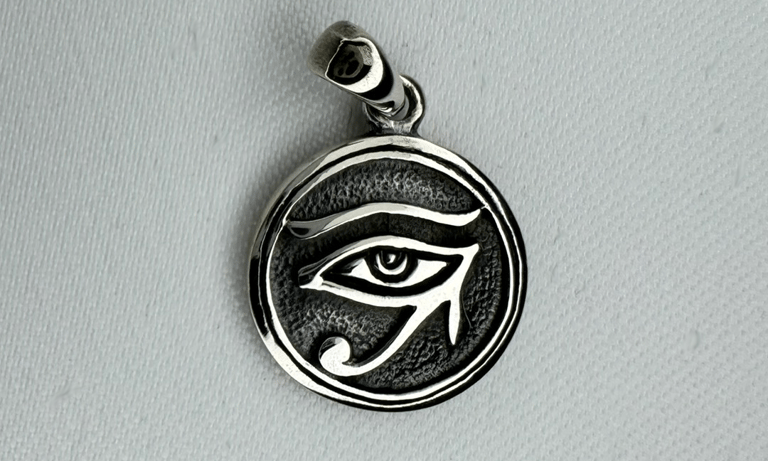The Eye of Ra, a Powerful Symbol of Ancient Egypt
The Eye of Ra symbol—an ancient emblem of solar power. Uncover its mythology, meaning, and modern relevance.
Jack Utermoehl
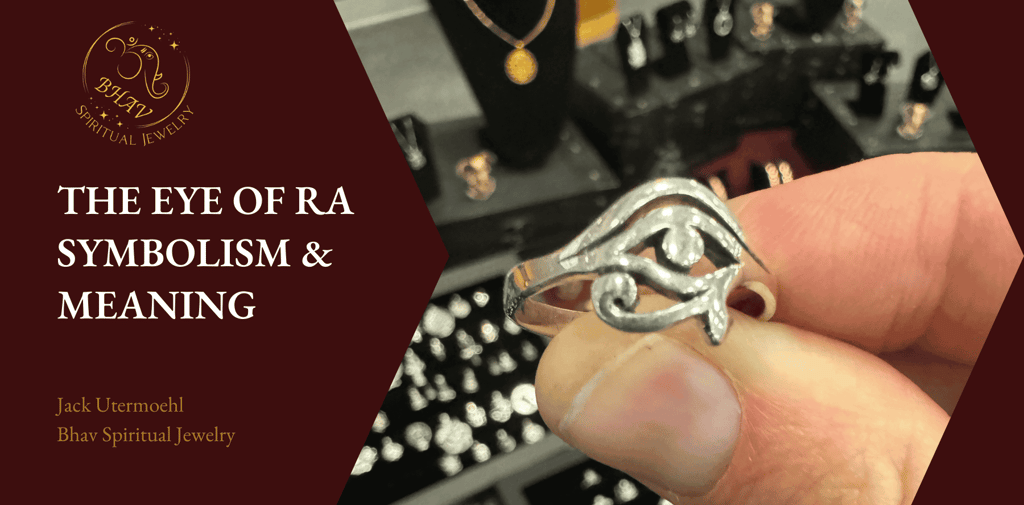

The Eye of Ra is not just an ancient Egyptian symbol—it’s a story wrapped in power. A force that creates, and a force that destroys. To understand this symbol is to recognize a duality we all live with: the ability to protect and to punish, to illuminate and to burn.
This complexity is often overlooked. The Eye of Ra is frequently mistaken for the Eye of Horus. While they share visual similarities and both command deep reverence in Egyptian mythology, their origins, meanings, and energies are distinct. The Eye of Horus represents healing, restoration, and lunar protection. The Eye of Ra, by contrast, is solar. It is fierce. It is sovereign.
I’m writing this to bring clarity to the confusion—and more than that, to offer context. The Eye of Ra wasn’t just a symbol carved on tombs or worn by pharaohs. It represented divine authority, righteous wrath, and the cosmic order itself. It was alive in the stories of lionesses and serpents, of blood-red beer and burning skies. And in today’s world, where power is often misunderstood or misused, revisiting this symbol gives us an opportunity: to see the shadow within light, and the grace within destruction.
In this article, I’ll walk you through:
The mythological roots
The goddess embodiments
The symbolic interpretations
The modern spiritual applications of the Eye of Ra.
The goal isn’t just historical—it’s personal. These stories were never just stories. They were mirrors.
The Birth of the Eye of Ra
In the mythology of ancient Egypt, even the gods could age—and Ra, the sun god and creator, was no exception. As time wore on and Ra grew old, humanity began to lose faith. They mocked his laws, disrespected divine order, and threatened the balance he had established. Ra, once the revered force that lit the sky, became a fading memory to those he had created.
Faced with rebellion, Ra did not act alone. He summoned a part of himself—a powerful extension, a living embodiment of his divine will. He created the Eye, often referred to as his daughter. But this was no passive emissary. The Eye was born as feminine power unrestrained, taking the form of Sekhmet, the lion-headed goddess of war and destruction.
Sekhmet descended with fury. Her mission was clear: to restore order through devastation. She ravaged the earth, tearing through the human population with such violence that even the gods grew afraid. Ra, watching the destruction unfold, realized that justice had turned into wrath—and that the Eye had become uncontrollable.
To stop her, Ra devised a trick. He filled the land with red beer dyed to resemble blood. Sekhmet, drunk on rage and mistaking the drink for more blood, consumed it and fell into a deep, disarming sleep. When she awoke, the fury had subsided. She had become calm, transformed. In some myths, she emerges as Hathor, the goddess of love, music, and joy. In others, she is Wadjet, the protective serpent goddess of Lower Egypt.
This story is more than myth. It’s an archetype: divine justice pushed too far, losing control, and the painful return to harmony. The Eye of Ra isn’t just a weapon—it’s a lesson in the limits of power, in the danger of righteous rage left unchecked. And it reminds us that even divine forces must reconcile with their own shadow.



Symbolism of the Eye of Ra
The Eye of Ra is more than a mythological narrative—it is a symbol layered with meaning, each one reinforcing the others. To the ancient Egyptians, symbols were tools of power, embedded in temples, worn as protection, and invoked in ritual. The Eye of Ra was no exception.
At its core, the Eye represents royal authority—not simply the right to rule, but the divine mandate to protect ma’at (cosmic order). Pharaohs aligned themselves with Ra to reinforce their legitimacy, often wearing the Eye on their crowns or inscribing it into the architecture of sacred spaces. It wasn’t just symbolism—it was statement. The Eye sees all, and the ruler who bears it must answer to that vision.
As an extension of Ra, the Eye is also the embodiment of solar power—penetrating, illuminating, unrelenting. It symbolizes clarity of perception, the kind that doesn’t just observe but judges. It sees into shadow. It exposes hidden disorder. And it brings heat when balance is threatened. The Eye doesn’t blink.
That made it a protective force, but one that carried a warning. Amulets bearing the Eye weren’t merely decorative—they were believed to shield the wearer from evil spirits, malevolent magic, and chaos itself. But this protection came with a cost. The same Eye that watched over you could destroy you if your actions betrayed divine law.
Which leads to its fourth layer: divine retribution. The Eye wasn’t just a watchful symbol; it was an agent of consequence. When humanity rebelled against divine order, the Eye became Sekhmet. When the land needed healing, it softened into Hathor. But in all forms, it delivered justice—not mercy.
Metaphorically, the Eye is consciousness itself—the awareness that sees, that knows, that holds us accountable. It is the eye of the cosmos, reflecting the moral and energetic order of the universe. It doesn’t just look outward; it turns inward, confronting us with the truth of our own intentions and actions.
For the ancient Egyptians, this duality—protector and destroyer, light and fire—made the Eye something to both revere and fear. They didn’t separate divinity from danger. The gods were powerful because they were balanced, and the Eye of Ra stood as a reminder: all light casts a shadow.
Goddesses of the Eye of Ra
The Eye of Ra is not a single being—it is a divine force that takes shape through goddesses. Each manifestation carries a distinct frequency of the Eye’s energy, expressing its power in ways that range from nurturing to violent. In Egyptian mythology, these embodiments are not symbolic—they are active agents of cosmic will.
Sekhmet: The Wrath of the Eye
Sekhmet is the lioness goddess, born of the Eye in its most destructive form. She is the embodiment of rage and righteous vengeance. When Ra sought to punish humanity for their disobedience, it was Sekhmet he unleashed. Her role was to burn away corruption, to destroy in order to preserve divine order. Priests feared her, and rituals were regularly performed to appease her rage.
Hathor: The Compassion of the Eye
In some versions of the myth, Sekhmet’s bloodlust is calmed, and she transforms into Hathor. As goddess of music, joy, fertility, and maternal love, Hathor represents the healing arc of the Eye. Where Sekhmet brings fear, Hathor brings delight. She reminds us that divine power is not only wrathful—it is also merciful, restorative, and joyfully alive.
Bastet: The Protector of the Home
Often shown as a lioness or a domestic cat, Bastet represents the Eye’s protective function, especially in relation to the home and family. While she retains the potential for violence (as a lioness), she is primarily revered as a guardian—ferocious only when provoked. Her presence emphasizes the role of the Eye in watching over boundaries and warding off chaos.
Wadjet: The Serpent Defender
Wadjet, depicted as a rearing cobra (uraeus), is the serpent goddess of Lower Egypt. As the Eye of Ra, she is placed on the royal crown, poised to strike down enemies with divine precision. She symbolizes the readiness of the Eye to defend sovereignty. When Ra travels through the underworld each night, Wadjet rides with him, protecting his solar barque from the chaos serpent Apep.
Goddess Manifestations of the Eye of Ra
The Eye of Ra vs. The Eye of Horus
At a glance, the Eye of Ra and the Eye of Horus appear nearly identical—both depicted as stylized human eyes with markings reminiscent of falcons or cats. But their mythological roots, energetic qualities, and spiritual uses are distinct. Treating them as interchangeable overlooks the nuance embedded in Egyptian symbolism.
Origins and Associations
The Eye of Ra originates with the sun god Ra. It is a projection of his will—often personified as a goddess sent to enforce divine order, whether through nurturing or annihilation. It represents the right eye, tied to the sun, and radiates active, outward, aggressive force. It is the energy of command, clarity, and confrontation.
The Eye of Horus (also called Wedjat) comes from the myth of Horus and Set. After losing his left eye in battle, the god Thoth restores it, making the Eye a symbol of wholeness, healing, and restored harmony. This is the left eye, aligned with the moon, and carries receptive, inward, protective energy. It is the energy of regeneration, intuition, and personal safeguarding.
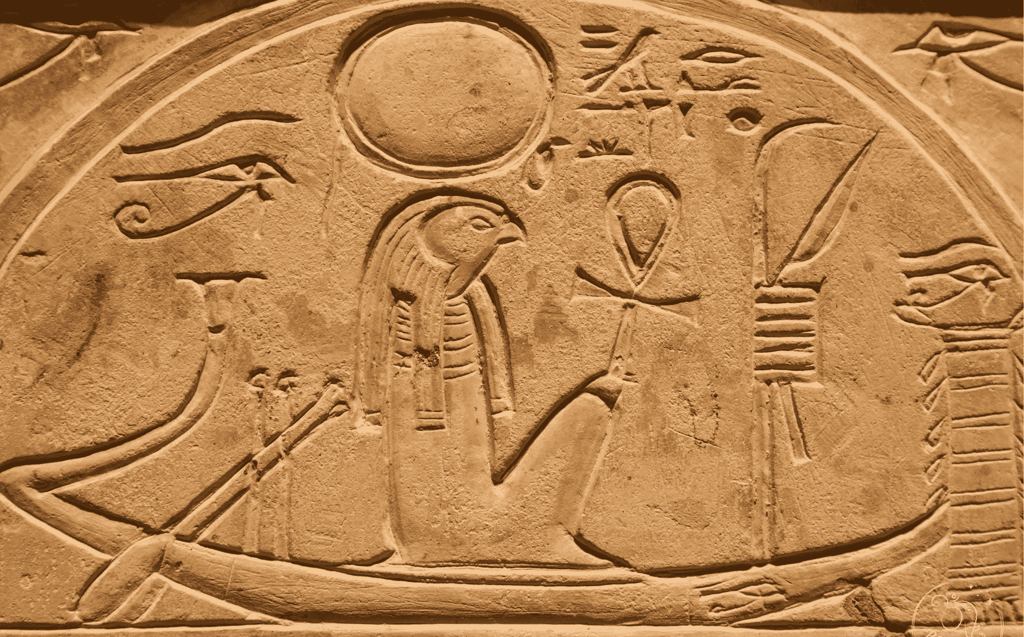

These goddesses aren’t simply mythic characters—they are archetypes of how power behaves in relationship to the world. The Eye of Ra doesn’t offer a single solution to disorder; it adapts. It knows when to destroy, when to nurture, when to guard, and when to strike. Understanding each expression of the Eye is essential to understanding how the ancients viewed not just their gods, but the very nature of divine authority.
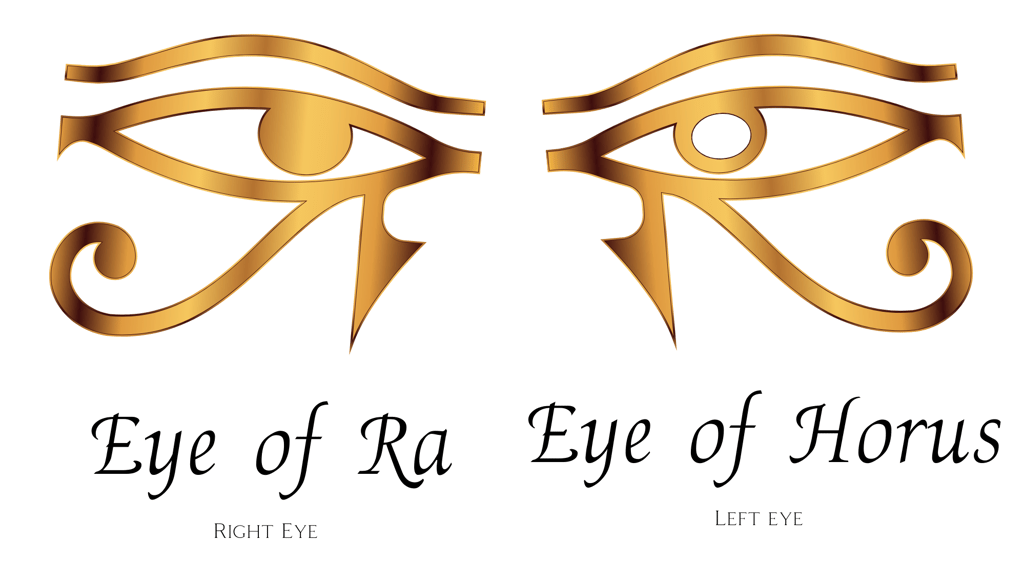

Recognizing this distinction isn’t just academic—it matters if you wear or invoke the symbol. The Eye of Ra is a call to divine judgment and clarity. The Eye of Horus is a request for balance and protection. Both are powerful, but they operate on opposite ends of the spiritual spectrum.
Understanding which eye you're working with is key to respecting their roots—and aligning with the right energy.
Historical Use: Amulets, Architecture, and Rituals
The Eye of Ra was not confined to myth—it was embedded into the physical world of ancient Egypt. It appeared across royal insignia, sacred spaces, and protective objects as a living presence of divine authority.
Royal Insignia and Crowns
Pharaohs often wore the Eye of Ra as a uraeus—a rearing cobra—placed at the center of their crown. This was no ornament. It signified that Ra’s power watched over the ruler and could strike down any threat. The Eye, coiled and alert, was both a warning and a weapon.
Tomb and Temple Carvings
Carved into temple walls and burial chambers, the Eye of Ra was invoked to guard thresholds—between the living and the dead, the sacred and the profane. It wasn’t decorative; it was functional magic, ensuring that the cosmic balance held firm.
Amulets of Protection and Power
The Eye was frequently used in amulets, often painted red—the color of Ra, fire, and protective wrath. These were worn not for beauty but for survival: to repel evil, guard the soul, and reinforce ma’at—the ancient Egyptian principle of truth, balance, and order.
To the Egyptians, the Eye was a guardian of cosmic law, not just personal safety. It stood watch over the entire structure of the universe. To wear it or invoke it was to align yourself with the force that holds chaos at bay.
Symbolic Power and Risk
The Eye of Ra is not a gentle symbol. Its mythology warns that unchecked power—even divine—can cross a line.
In the most well-known myth, Ra sends the Eye (as Sekhmet) to punish rebellious humans. But once unleashed, Sekhmet’s bloodlust becomes insatiable. She slaughters with such fury that even Ra fears she will annihilate all of humanity. To stop her, he floods the land with red-dyed beer, tricking her into drinking until she passes out. Only then does the violence subside.
This myth is not just a tale of divine wrath—it’s a reflection of power without limits. It raises a difficult truth: even sacred force can become destructive when ungrounded.
In spiritual practice, this story serves as a caution. Solar energy—the fire of clarity, confidence, willpower—must be balanced with humility and discernment. Without that, it can become domination, self-righteousness, or spiritual bypassing.
When invoking the Eye in ritual or meditation, the question must be:
Is this energy anchored in integrity—or is it being wielded to punish, dominate, or control?
Clarity without compassion is not wisdom. It’s warfare.
Modern Interpretations of Eye of Ra
Today, the Eye of Ra continues to appear everywhere—from jewelry and tattoos to pop culture and esoteric symbolism. But as its visibility increases, so does the potential for misinterpretation.
In Jewelry and Tattoos
Many wear the Eye of Ra as a talisman of power and protection. Its sharp lines and symmetrical beauty lend well to design, but its meaning is often flattened to “eye = protection.” Without context, its deeper message is lost: the responsibility that comes with invoking divine force.
In Pop Culture and Occult Circles
The Eye has been adopted into modern secret societies, conspiracy lore, and occult frameworks. It’s often conflated with the “all-seeing eye” or reduced to a generic symbol of surveillance or elite control. These reinterpretations rarely reflect the Eye’s spiritual, mythological, or ethical roots.
In Energy Work and Meditation
Some practitioners call on the Eye of Ra during solar plexus activation or rituals of purification and boundary-setting. When used intentionally—with reverence and understanding—the Eye becomes a powerful guide toward clarity, confidence, and energetic sovereignty.
But without grounding in its original context, the risk remains: misuse becomes misalignment. This is where reverence must override trend.
Forms of the Eye of Ra
The Eye of Ra has taken many forms across Egyptian art and ritual. Each version tells a different aspect of its Ra's story.
The Eye + Solar Disk + Uraeus
This is one of the most iconic visualizations of the Eye of Ra: a cobra (uraeus) rearing up in front of a solar disk, often placed on royal headdresses. It represented the presence of divine fire and protection at the seat of royal authority.
The solar disk signifies Ra’s dominion over light, life, and judgment.
The cobra is poised to strike—symbolizing swift, divine retaliation against disorder.
This combination reinforced that the pharaoh was not just king, but vessel of Ra’s living power.
Eye in Amulet Form
Amulets shaped like the Eye were worn across classes in ancient Egypt. Unlike the cool blue of the Eye of Horus, Eye of Ra amulets were often red, invoking solar energy, vitality, and wrathful protection.
The markings reflect falcon-like features, linking back to Ra’s connection to the sky.
These amulets were used to repel curses, ward off evil spirits, and guard the soul.
They were especially common in tomb placements, ensuring safe passage through the underworld.
The Eye as Cobra (Wadjet)
In this form, the Eye appears as Wadjet, the protector of Lower Egypt—a serpent goddess and defender of divine order.
Depicted as a cobra striking from the pharaoh’s brow, she embodies immediate and lethal force.
Wadjet did not wait for enemies to act; she preemptively struck down chaos.
She is often coiled, hood flared, ready to burn enemies with her fiery breath—a literal weapon of Ra.
The Eye as Cat (Bastet)
When Ra’s eye took the form of Bastet, it was as a calculated guardian rather than a berserker. This form represents the quiet, discerning vigilance of Ra’s watchfulness.
Bastet appears as a domestic cat or lioness, seated or walking, calm but alert.
She is the protector of the home, women, and the vulnerable, striking only when absolutely necessary.
Her energy is that of precision and restraint—Ra’s eye in service to peace.
The Eye as Lioness (Sekhmet)
Sekhmet is the Eye in its most terrifying form. When Ra’s patience ends, the Eye becomes a lioness with flaming breath and unrelenting fury.
Sekhmet is depicted with an open mouth, bared teeth, and forward-moving stance.
Her image is found on temple walls and statues as a force of divine cleansing through destruction.
She is invoked in times of plague, rebellion, or injustice—when Ra must restore order through fear.
Each of these forms was ritually and theologically distinct, yet all were understood to be facets of the same truth: The Eye of Ra is alive. It adapts. It becomes what the world needs to restore order.


The Eye That Sees, Burns, and Protects
The Eye of Ra is not a passive symbol. It sees with judgment, acts with force, and protects with fire. It was born of rebellion, used as retribution, and later restored as a symbol of balance.
It represents the eternal paradox of divine power: to create, one must sometimes destroy—but only with discernment.
The Eye is more than history. It’s a mirror. It asks us:
What are you protecting?
What are you burning down?
And are you doing it with clarity—or with rage?
When we wear or invoke the Eye of Ra, we call in a force that must be respected. Not because it is dangerous, but because it reflects a truth too often ignored: Power without wisdom is not sacred. It’s chaos in disguise.
Shop Eye of Ra jewelry today—and wear it as a symbol of vision, power, and sacred responsibility.
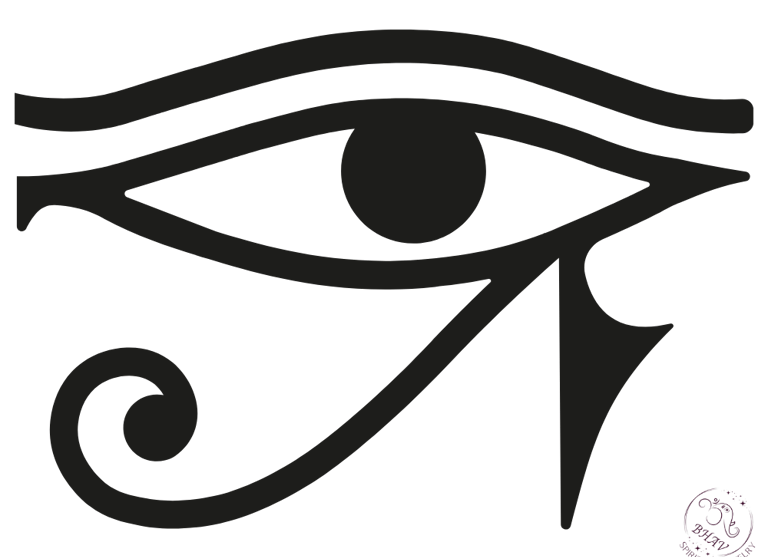

Bhav Spiritual Jewelry
Sacred Adornments for Every Path
Connect with Bhav
© 2025. All rights reserved.

